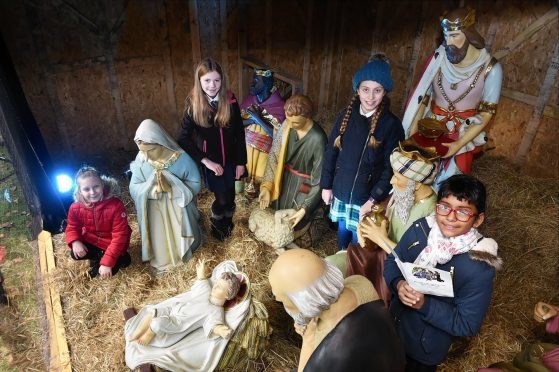In my travels around Scotland, I found myself sitting down with a recently retired community midwife who had worked in one of the most deprived parts of Scotland in the heart of the Press and Journal’s wide circulation area.
It was a conversation that seemed to produce tears and laughter in equal measure.
Joyce – let’s call her that – talked of a time when she was called out one night to a home delivery.
The house she described was one that was a little “chaotic” as the homes of real families often are.
The lady had two older daughters in their teens, both with learning challenges, who constantly came into the room from the moment Joyce arrived, to ask if the baby was here yet, while dad’s eyes never wavered from the telly downstairs.
As the time for delivery approached, mum let out a scream which brought the girls back yet again to the bedroom to see if the baby was here.
And when there was no sign of any new arrival and they saw mum’s distress, the girls gave poor Joyce a row for hurting their mum.
Joyce then had a mum about to give birth and two upset girls to deal with and then just to make matters worse, into the noise and hullabaloo, came the family dog, who shot into the room and jumped up onto the bed and went straight to the point of greatest interest.
Our brave midwife ended up trying to calm mum and the girls down whilst at the same time trying to elbow the dog out the way so that she could deliver a beautiful baby boy.
“Call the Midwife” has nothing on that.
The Christmas story of the birth of a baby in a stable in Bethlehem may not have been quite as chaotic as Joyce’s experience, but it can’t have been far off it.
A stable is not the kind of setting any mum-to-be is likely to put high on the list of perfect places to bring a child into the world.
It is hardly the most hygienic setting and the animals that must have shared the surroundings with the young Mary and Joseph…well, they were animals and prone to the practices of their sort.
Obviously we are talking of a couple of thousand years ago.
Things were different back then and childbirth, in particular, was far more dangerous for both mother and child.
And for Mary and Joseph that danger was multiplied by the fact that they didn’t have anywhere to stay – no home they could call their own.
There’s no mention of it in the Bible, but it is more than likely that the young couple about to welcome their first child into the world, would not have been left simply to get on with it.
The chances are, as was the practice, someone in the local community with experience of delivering babies would have been called on to give a hand.
The omission of that kind of detail is not deliberate since the focus of the Christmas story is not about the technicalities of childbirth in ancient Palestine but about the wonderful and shocking arrival of the Son of God into the midst of the lives of very ordinary human beings.
But those unmentioned people like the community midwife, who were very likely in the background that day, are representative of the reason the child came.
Jesus was born to show that everyone has their worth.
In a world in which people don’t always notice what others give or do, when we don’t always remember to thank those we meet who help and who encourage us in so many ways, Christmas is a corrective to our blinkered world view and it encourages us to acknowledge those who share this planet with us, adding to the richness both of our lives and of our lives’ experience.
But there’s more still to Christmas.
In a world that also seems to be guilty of measuring people’s value by the amount they earn, or where they live or by the labels on the things they have, the real Christmas story points to the baby who was born for the sake of those who struggle and who have less than enough.
Jesus’ birth in a smelly and dirty stable shows that he came among the poorest so that the poorest might find their value and worth through him.
If in all our Christmas celebrations we fail even to hint at that, then we’re not celebrating Christmas at all.
Christmas is about recognising that every person, no matter their beliefs, nationality, age, income, sexuality, what language they speak, the way they dress, or the colour of their skin, matter.
Christmas says those in the background as well as those pushed aside are at the very heart of who is important to the God who sent his Son.
Christmas is about the God of all, who came for all that all may have life.
So…
Happy Christmas all.

